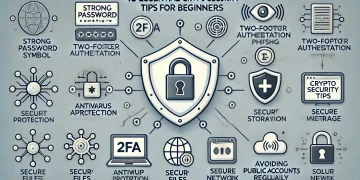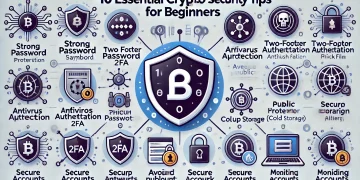Table of Contents
- Introduction
- What is DeFi?
- The Evolution of DeFi
- Current Trends in DeFi
- The Impact of DeFi on Traditional Finance
- Challenges Facing DeFi
- Future Prospects of DeFi
- Conclusion
Introduction
Decentralized Finance, or DeFi, has emerged as one of the most transformative and disruptive forces in the financial world. Built on blockchain technology, DeFi aims to create a more open, transparent, and accessible financial system that operates without intermediaries. As we delve into the current trends and future prospects of DeFi, we’ll explore how this innovative sector is reshaping the landscape of finance and what it might mean for the future of money.
What is DeFi?
DeFi refers to a ecosystem of financial applications built on blockchain networks, primarily Ethereum. These applications aim to recreate and improve upon traditional financial services using smart contracts and decentralized applications (dApps). Unlike traditional finance, DeFi operates without central authorities or intermediaries, allowing for peer-to-peer transactions and services.
Key characteristics of DeFi include:
- Decentralization: No single entity controls the system.
- Transparency: All transactions are recorded on a public blockchain.
- Interoperability: Different DeFi protocols can often work together seamlessly.
- Permissionless: Anyone with an internet connection can access DeFi services.
- Programmable: Smart contracts automate financial processes.
The Evolution of DeFi
The concept of DeFi has its roots in the creation of Bitcoin in 2009, which introduced the idea of peer-to-peer electronic cash. However, the DeFi movement as we know it today began to take shape with the launch of Ethereum in 2015. Ethereum’s smart contract functionality allowed developers to create more complex financial applications beyond simple value transfer.
Key milestones in DeFi’s evolution include:
- 2017: Launch of MakerDAO, one of the first DeFi protocols, introducing the concept of decentralized stablecoins.
- 2018: Emergence of decentralized exchanges like Uniswap, revolutionizing token trading.
- 2020: The “DeFi Summer,” marked by explosive growth in Total Value Locked (TVL) and the popularization of yield farming.
- 2021: Integration of NFTs into DeFi protocols and the rise of DeFi 2.0 concepts.
- 2022-2023: Focus on scalability solutions and cross-chain interoperability.
Current Trends in DeFi
Yield Farming
Yield farming, also known as liquidity mining, has become one of the most popular trends in DeFi. It involves lending or staking cryptocurrency assets to generate returns. Users provide liquidity to DeFi protocols and, in return, earn rewards, typically in the form of the protocol’s native tokens.
Key aspects of yield farming:
- High potential returns compared to traditional finance
- Complex strategies involving multiple protocols
- Risk of impermanent loss and smart contract vulnerabilities
Liquidity Mining
Liquidity mining is a subset of yield farming where protocols distribute their native tokens to users who provide liquidity. This mechanism serves two purposes: incentivizing users to provide liquidity and distributing governance tokens to create a decentralized user base.
Popular liquidity mining protocols:
- Compound
- Aave
- SushiSwap
Decentralized Exchanges (DEXs)
Decentralized exchanges have gained significant traction in the DeFi space. Unlike centralized exchanges, DEXs operate without a central authority, allowing users to trade directly from their wallets.
Key features of DEXs:
- Non-custodial trading
- Automated market makers (AMMs) for liquidity provision
- Lower barriers to entry for token listings
Popular DEXs:
- Uniswap
- SushiSwap
- PancakeSwap
Lending and Borrowing Platforms
Decentralized lending and borrowing platforms have become a cornerstone of the DeFi ecosystem. These protocols allow users to lend their crypto assets and earn interest or borrow assets by providing collateral.
Key features:
- Over-collateralization to mitigate risk
- Variable and fixed interest rates
- Flash loans for instantaneous borrowing and repayment
Leading lending platforms:
- Aave
- Compound
- MakerDAO
Stablecoins
Stablecoins play a crucial role in the DeFi ecosystem by providing a bridge between volatile cryptocurrencies and stable fiat currencies. They offer a way to preserve value within the crypto ecosystem without exposure to high volatility.
Types of stablecoins:
- Fiat-collateralized (e.g., USDC, USDT)
- Crypto-collateralized (e.g., DAI)
- Algorithmic (e.g., FRAX)
NFTs in DeFi
Non-fungible tokens (NFTs) have found their way into DeFi, creating new opportunities for financial innovation. NFTs are being used as collateral for loans, fractionalized for shared ownership, and integrated into yield farming strategies.
Use cases of NFTs in DeFi:
- NFT-collateralized loans
- Fractionalized NFT ownership
- NFT yield farming
The Impact of DeFi on Traditional Finance
DeFi is challenging traditional financial systems in several ways:
- Accessibility: DeFi provides financial services to anyone with an internet connection, potentially banking the unbanked.
- Efficiency: Smart contracts automate processes, reducing costs and increasing speed.
- Transparency: All transactions are recorded on public blockchains, increasing trust and reducing fraud.
- Innovation: The open nature of DeFi allows for rapid innovation and experimentation.
- Yield opportunities: DeFi often offers higher yields than traditional savings accounts or investments.
As DeFi continues to grow, traditional financial institutions are taking notice. Some are beginning to explore ways to integrate DeFi concepts into their existing systems, while others are developing their own blockchain-based solutions.
Challenges Facing DeFi
Despite its rapid growth and potential, DeFi faces several significant challenges:
Security Concerns
The DeFi space has been plagued by hacks, exploits, and smart contract vulnerabilities. In 2021 alone, DeFi protocols lost hundreds of millions of dollars to various attacks. Addressing these security concerns is crucial for the long-term viability of DeFi.
Key security issues:
- Smart contract vulnerabilities
- Oracle manipulation
- Flash loan attacks
Regulatory Uncertainty
The regulatory landscape for DeFi remains unclear in many jurisdictions. As DeFi grows, it’s likely to face increased scrutiny from regulators concerned about investor protection, financial stability, and anti-money laundering (AML) compliance.
Regulatory challenges:
- Defining DeFi protocols under existing financial regulations
- Implementing Know Your Customer (KYC) and AML procedures
- Addressing cross-border regulatory issues
Scalability Issues
As DeFi grows in popularity, blockchain networks, particularly Ethereum, have faced scalability issues. High gas fees and slow transaction times during periods of network congestion have hindered user experience and adoption.
Potential solutions:
- Layer 2 scaling solutions (e.g., Optimistic Rollups, ZK-Rollups)
- Alternative blockchain networks (e.g., Solana, Avalanche)
- Ethereum 2.0 upgrade
User Experience
While DeFi offers powerful financial tools, the user experience often remains complex and intimidating for newcomers. Simplifying interfaces, improving educational resources, and enhancing user onboarding processes are crucial for mainstream adoption.
Areas for improvement:
- Simplified user interfaces
- Better educational resources
- Improved wallet management tools
Future Prospects of DeFi
Despite the challenges, the future of DeFi looks promising. Here are some key areas of development:
Cross-Chain Interoperability
As DeFi expands beyond Ethereum, cross-chain interoperability is becoming increasingly important. Projects are working on solutions to allow seamless movement of assets and information between different blockchain networks.
Key interoperability projects:
- Polkadot
- Cosmos
- Chainlink
Integration with Traditional Finance
The line between DeFi and traditional finance (TradFi) is likely to blur in the coming years. We may see increased integration of DeFi concepts into traditional financial products and services.
Potential developments:
- Tokenization of real-world assets
- DeFi-powered savings accounts in traditional banks
- Integration of DeFi protocols with traditional payment systems
DeFi 2.0 and Beyond
The next generation of DeFi protocols, often referred to as DeFi 2.0, aims to address some of the limitations of current systems. These protocols focus on capital efficiency, sustainable yield generation, and improved risk management.
Features of DeFi 2.0:
- Protocol-owned liquidity
- Yield optimization
- Advanced risk management tools
Conclusion
Decentralized Finance represents a paradigm shift in how we think about and interact with financial services. While it faces significant challenges, particularly in terms of security and regulation, its potential to create a more open, transparent, and accessible financial system is undeniable.
As DeFi continues to evolve, we can expect to see more innovative products, improved user experiences, and potentially, a redefinition of the global financial landscape. Whether DeFi will completely replace traditional finance or coexist alongside it remains to be seen, but one thing is certain: the world of finance will never be the same.
The journey of DeFi is just beginning, and its future prospects are as exciting as they are unpredictable. As we continue to explore this new financial frontier, it’s clear that DeFi will play a significant role in shaping the future of money and finance in the digital age.






























